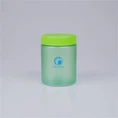When it comes to product packaging, the terms lid and cap are often used interchangeably. However, they serve slightly different purposes in design, function, and application. Understanding the difference can help businesses choose the right closure for their products, whether it's for food, beverages, cosmetics, or pharmaceuticals.
1. Basic Definition
Lid: A lid is a cover that sits on top of a container, usually providing easy access. It can be flat, hinged, or snap-on. Think of coffee cup lids, food storage lids, or jar lids.
Cap: A cap is a closure that screws, snaps, or presses onto the neck of a bottle or container. Caps are designed to create a seal, preventing leakage or contamination. Examples include water bottle caps, medicine bottle caps, and cosmetic lotion caps.
2. Functional Differences
Sealing: Caps generally provide a stronger seal, often with threads or liners, which is essential for liquid and chemical products.
Accessibility: Lids are made for frequent opening and closing, making them ideal for foods, powders, or household goods.
Design Variations: Caps come in many functional designs, such as child-resistant caps, flip-top caps, or tamper-evident caps. Lids are more about coverage and convenience.
3. Industry Applications
Lids are common in the food and beverage industry (yogurt cups, takeaway coffee, storage containers).
Caps dominate in pharmaceuticals, health supplements, personal care, and chemical packaging, where product safety and airtight sealing are critical.
4. Choosing the Right Closure
When selecting between a lid and a cap, manufacturers should consider:
The type of product (liquid, powder, solid)
Safety requirements (tamper resistance, child resistance)
Customer convenience (easy opening, reusability)
Packaging materials and compatibility
Conclusion
While lids and caps both serve as closures, their differences lie in sealing strength, application, and user experience. For products that require reliable sealing and safety, caps are the better option. For items meant for quick access and ease of use, lids are more practical.
Not sure whether your packaging needs a lid or a cap? This guide explains the difference and helps you make the right choice. At Mingda, we specialize in manufacturing high-quality plastic bottles and closures for food, supplements, and cosmetics. [Contact us] to learn more about custom packaging solutions.
















